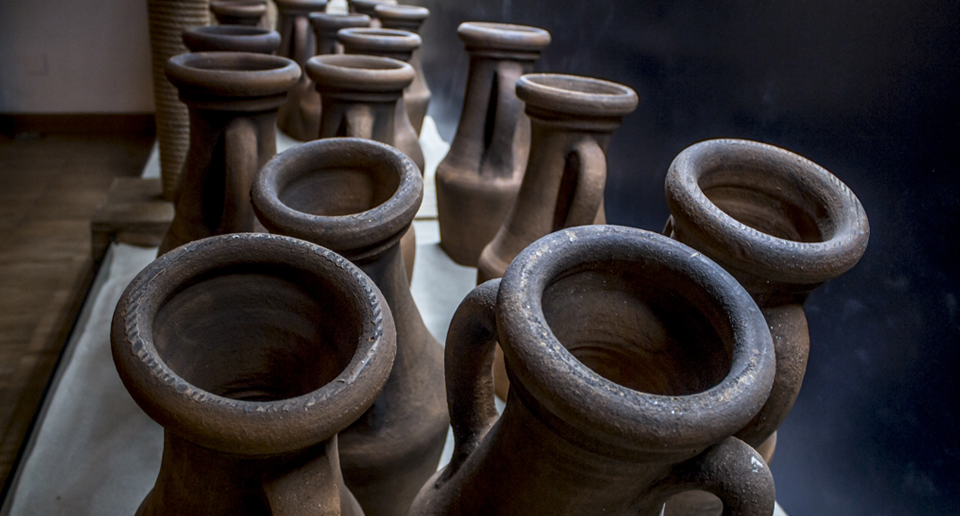The tour can be complemented by a visit to the Trocadero Island, which must be arranged by prior arrangement and with express authorization.
We propose a route that, starting from the Interpretation Center of Culture, goes through some of the stately homes and establishments of trade with the Indies in the streets Real, Ancha and Cruz Verde; visit the Fortified Dock of the city and, from there, goes to Santo Domingo Street, with a marked colonial air and chaired by the Petit Torre, lookout tower of the eighteenth century, to finish at the Casa Consistorial, former stately home of the Byass family. The tour can be complemented by a visit to the Trocadero Island, which must be arranged by prior arrangement and with express authorization.
1. INTERPRETATION CENTER OF THE CULTURE OF PUERTO REAL AND CHURCH OF SAN JOSÉ

The Centro de Interpretación de la Cultura de Puerto Real is a museum space designed to learn about the history, the most recent past and the present of the city, how its inhabitants are, their experiences, their customs and their way of being. A perfect way to start the touristic visit to Puerto Real.
2. BAROQUE FACADES
The urban physiognomy of Puerto Real stands out for three elements. Firstly, the unique layout of its streets, in the form of a checkerboard; secondly, the marked colonial air of the city, the result of the shared history between the two shores of the Atlantic Ocean; and, thirdly, the abundance of baroque facades that decorate its houses and that is the result of the boom of the city throughout the eighteenth century as a result of the transfer of the Casa de Contratación to Cadiz in 1717, which attracted merchants, nobles and illustrious sailors to the Villa. Here are just some of the covers that you can visit on your walk through Puerto Real.
3. GREEN CROSS STREET
It is one of the streets that probably best preserves the stately air of the town of Puerto Real in the eighteenth century. The magnificent buildings between Amargura and La Plaza streets stand out. It is precisely in this place where the niche containing the green cross that gives its name to the street and that links this urban space with the Inquisition is preserved.
4. FORTIFIED DOCK
Based on a pre-existing dock from the 16th century, the architect Torcuato Benjumeda was in charge of its fortification in the 18th century to meet the needs of the city’s port as part of the supply system for construction materials and other goods in the context of the transfer in 1717 of the Casa de Contratación to Cádiz. In addition, it could serve as a space of first defense against possible maritime attacks.
5. PETIT TOWER
It is a building with a lookout tower built in the eighteenth century that occupies a large plot located between Amargura and Ribera del Muelle streets. The lookout towers characterize the buildings of the seventeenth and eighteenth centuries in the Bay of Cadiz and its link with the life and business of the sea, hence they are located in the place closest to it. This square tower overcomes the difference in level between the streets Amargura and Ribera del Muelle, has two floors and a wooden coffered ceiling inside. It was owned by the Terry family.
6. MUNICIPAL ARCHIVE
This colonial style house, built by Diego Ojeda, a merchant of the city, was the residence of the Marquises of Montefuerte since the mid-nineteenth century. It corresponds to the courtyard house model and its ornamental elements stand out, especially the montera that covers the main courtyard.
7. CITY HALL
The current Casa Consistorial building, built by the Byass family, who occupied it for at least a century, was one of the most important stately homes in the city. The City Hall established its headquarters there in 1910. From its façade, the clock that presides over it stands out, whose chimes ring at the hour and, again, after two minutes. Inside, the Plenary Hall stands out, presided over by the institutional coat of arms of the town and, on the other side, an important canvas by the Cadiz painter Justo Ruiz Luna.
8. TROCADERO ISLAND
The Trocadero, which gives its name to the emblematic Parisian square, has a rich and abundant history. An area of important commercial traffic since the XVII century, it is in the middle of the XVIII century with the installation of the Consulado de Cargadores de Indias when it reaches its greatest development. The battle of the Trocadero, in August 1823, brought him European fame. Today the island of El Trocadero, in addition to housing several military constructions, such as the Fort of San Luis, and naval constructions from the 18th century, is an area of special importance from the natural and ornithological point of view that can only be visited by arrangement and with express authorization.





